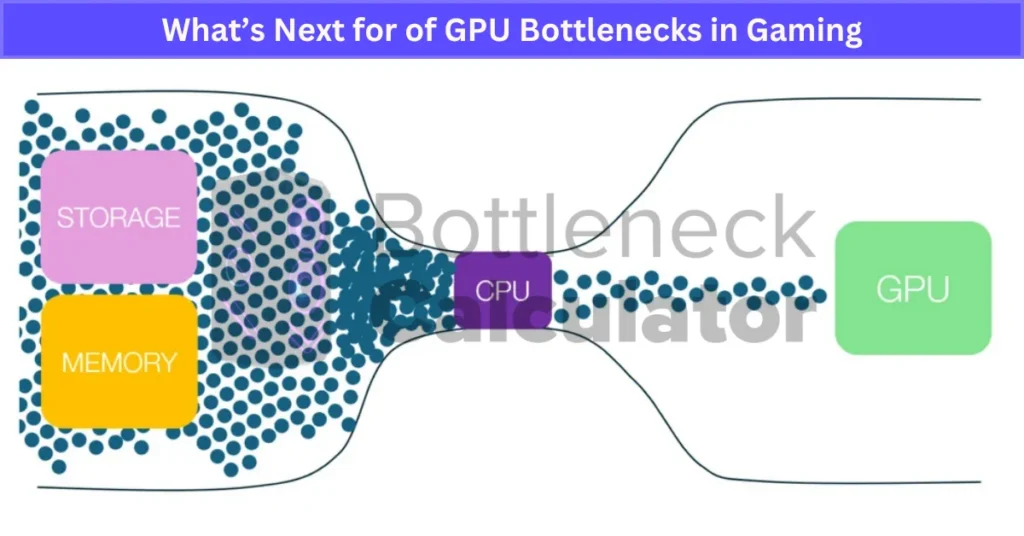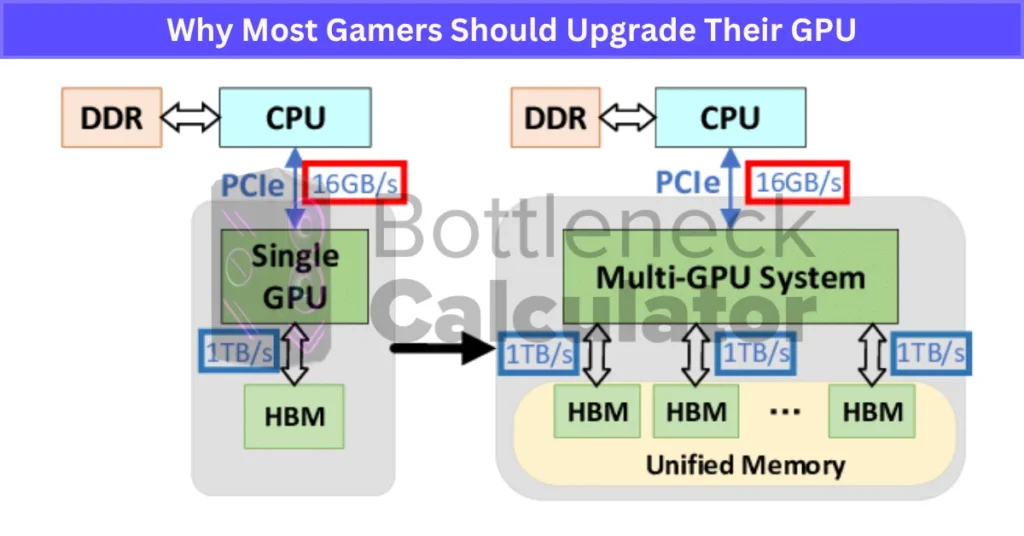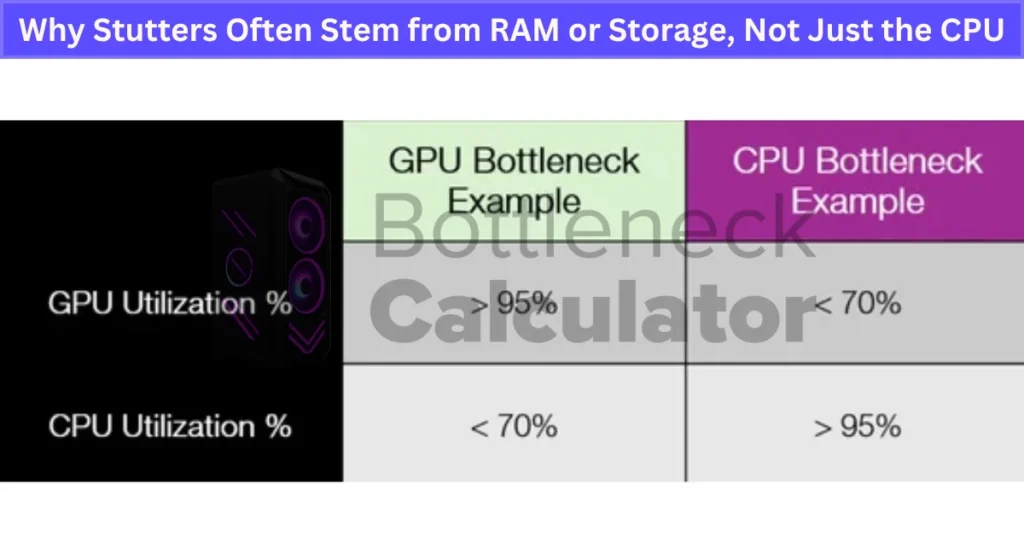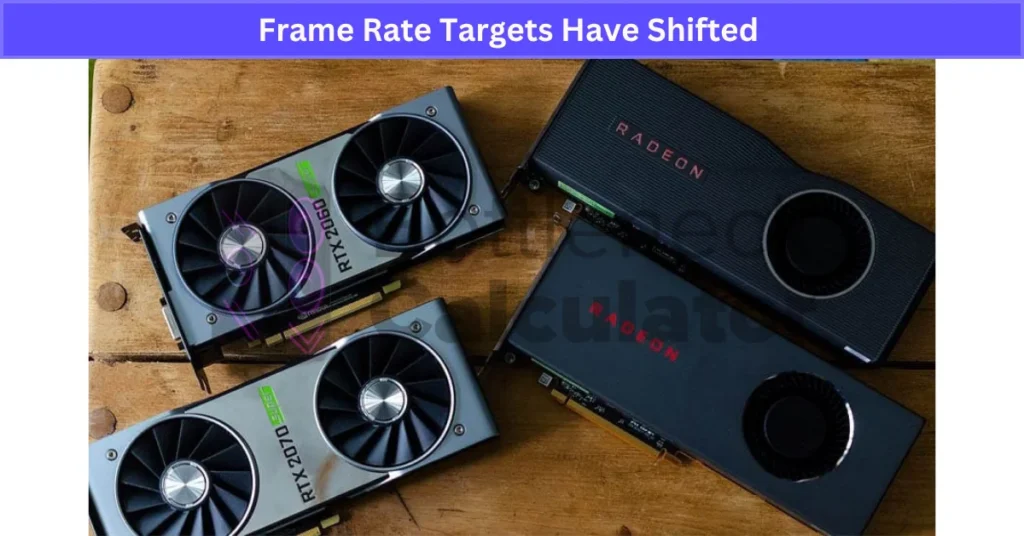How New Tech Will Impact GPU Bottlenecks in Gaming
Last updated:
Gaming has changed a lot over the years. We’ve gone from simple graphics to games that look almost real. But as games get better, they also need stronger parts to run well. That’s where things get tricky. The future of gaming means more powerful systems — but also more chances for a GPU bottlenecks in Gaming to mess things up. That’s when your graphics card is ready to go, but your CPU, motherboard, or RAM just can’t keep up.
See, upgrading your graphics card is usually simple. But if your old CPU or motherboard slows it down, then it’s a problem. And future gaming technology advancements — like real-time ray tracing or big open-world games — will push systems even harder. That’s why stuff like AI upscaling (DLSS, FSR) matters. It helps take some load off your GPU. Honestly, bottlenecks happen a lot more than people think, especially in games that demand a lot from both the CPU and GPU.
If you want to get the most out of your hardware, check out our full guide on graphics settings to see which tweaks can give you smoother gameplay and fewer slowdowns. So, planning upgrades smartly is going to be a big part of gaming going forward.
Tips to Prevent GPU Bottlenecks in Gaming
I’ve seen way too many builds where someone drops $800 on a GPU and pairs it with a Ryzen 5 3600. Sure, it runs. But is it smart? Not really. CPU bottlenecks like this are totally avoidable — if you plan ahead. Building a future-proof PC build doesn’t mean spending a fortune. It means thinking smart about how your parts will work together down the road. That includes choosing the right graphics card—whether you’re comparing Nvidia vs AMD GPUs or planning for Multi-GPU Setups.
Here’s how I’d go about it:
- ✅ Pick a current-gen CPU and motherboard. That way, you’ve got better chipset support for future CPUs.
- ✅ Use fewer high-capacity RAM sticks. Go 1x16GB now so you can add more later, rather than being stuck with 2x8GB. It’s a cleaner RAM configuration too.
- ✅ Get a power supply with extra headroom. Don’t just match wattage—leave space for upgrades.
- ✅ Make sure your motherboard has open PCIe, M.2, and SATA slots. You’ll thank yourself when you add new parts later.
- ✅ Use tools like bottleneck calculators. Not perfect, but they help spot obvious performance bottlenecks.
- ✅ Pair your monitor resolution and refresh rate with your GPU. 1440p at 144Hz? Your CPU better be ready.
- ✅ Think airflow. Good cases stop thermal throttling — and your CPU stays fast under pressure.
Now here’s what folks usually skip:
A lot of balanced gaming setup planning goes into the flashy stuff like the CPU, GPU, and RGB. But your peripherals, like an old 60Hz monitor or weak mouse input, can hold back your performance too. Using the GeForce RTX 5080 Bottleneck Calculator makes it easier to see whether your slowdown is caused by components or by supporting hardware. And don’t ignore airflow and thermal throttling. A hot CPU slows down, plain and simple.
Even budget keyboards, monitors, or headsets can perform like champs if you match them right. So, yeah, avoiding bottlenecks isn’t just about big-name parts. It’s about thinking of your build like a team — all the players matter.
Honestly, just make sure everything plays nice together. That’s how you keep your rig smooth for the long run.
What’s Next for of GPU Bottlenecks in Gaming? Ray Tracing, AI, and the Future Visual Experience
Back in the early days, game graphics were simple—flat textures, blocky characters, and limited color palettes. As time went on, real-time rendering evolved. We went from basic 3D models to highly detailed environments with dynamic lighting. Now, we’re entering a new phase in the future of gaming—one where ray tracing and AI-powered graphics are reshaping how games look and feel.
Ray tracing is a big leap forward. It tries to copy how light works in the real world—bouncing off surfaces, casting natural shadows, and creating true reflections. Instead of faking the look of light, it simulates it. That’s why games like Cyberpunk 2077 or Minecraft RTX look so different with ray tracing turned on. The world feels more grounded, and scenes come alive with depth and realism.
But that’s just half the story. Neural networks in gaming are now helping with everything from character animation to texture detail. Tools like DLSS use AI to upscale images, making games run faster without losing sharpness. Instead of needing raw GPU power, the system “guesses” high-res frames using deep learning. AI-powered graphics also help developers create more natural movements and more realistic facial expressions. It’s not just about performance—it’s about making the virtual world feel more alive.

Together, ray tracing and AI bring a whole new level of gaming immersion. You get shadows that match the sun’s angle in real time. Faces that react like real people. Worlds that feel less like code and more like reality. Players don’t just see better graphics—they feel more inside the game.
Still, these features come with challenges. Ray tracing demands a powerful GPU. And AI models, while smart, need time and money to train. For developers, that means higher production costs. And for gamers, it can mean spending more on hardware just to enjoy the latest tech.
Looking ahead, the possibilities are wild. We could see games where the lighting adjusts as clouds move—ray traced global illumination reacting in real-time. Or fully AI-generated side quests, characters, and voice lines created on the fly. Engines like Unreal Engine 5 are already heading in that direction. Imagine dynamic weather powered by AI or entire cities built by machine learning. The future isn’t just better graphics—it’s smarter, more reactive, and deeply personal worlds.
Why CPU Bottlenecks Are Often Overhyped in the Gaming World
I’ve seen this panic way too many times—someone on Reddit drops a post like, “Will a Ryzen 5600 bottleneck my RTX 4070?” and suddenly the whole thread spirals. Look, CPU bottlenecks are real, sure. But in the gaming world, they get blown way out of proportion. Most people don’t even notice them, especially in real gameplay. It’s not all doom just because your CPU isn’t top-of-the-line.
1. Real-world gaming doesn’t match benchmarks.
Synthetic tests can make things look worse than they are. You’ll see a real-world benchmark showing 20% lower FPS because of the CPU—but that’s often in 1080p with no GPU limits. In real gameplay, like running Cyberpunk at 1440p or 4K, the GPU does most of the work. So if your game feels smooth and looks good, who cares if you’re hitting 140 FPS or 160? You probably won’t even notice. Sites like TechPowerUp have shown this again and again.
2. CPU upgrades don’t always give you big gains.
Let’s say you swap from a Ryzen 5600X to a Ryzen 5800X3D. In some games, yeah, you’ll see a bump. But it’s not night and day. In many cases, the performance difference is like… 5-10 FPS. And that’s with a beast GPU like an RTX 5090. If you’re not a high-refresh esports player, it won’t change your life. So spending $300 to upgrade CPU for gaming just because of benchmarks? Kind of a waste unless you’re doing heavy multitasking or pro workloads.
3. Most modern CPUs are already good enough.
Seriously, CPUs from 3–4 years ago are still killing it. If you’ve got a Ryzen 5 or Intel i5 from a recent gen, chances are it’s already fine. Game developers know that most players aren’t using high-end chips, so they build around that. Plus, most new games are GPU-bound anyway. The gaming performance difference between a mid-tier CPU and a high-end one? Tiny. It’s smarter to put your money into a better GPU, faster storage, or more RAM.
So yeah, CPU bottlenecks exist—but don’t let the internet scare you into upgrading too early. Check your real frame rates, see how your system feels, and then decide. Fear-driven builds rarely age well.
Why Most Gamers Should Upgrade Their GPU Before Worrying About the CPU
According to the latest Steam Hardware Survey, most gamers still play at gaming resolution 1080p, and a huge chunk are using mid-tier cards like the RTX 3060 or older. That tells you a lot—people aren’t maxing out their rigs, and most aren’t running bleeding-edge CPUs or GPUs. So when someone says, “I’ve got a CPU bottleneck,” it’s usually not what’s actually slowing things down.
Here’s the deal: at 1080p, the CPU does more of the work because the GPU isn’t being pushed as hard. That’s why some players might see higher FPS gains from a CPU upgrade—if they already have a strong GPU. But in most cases, folks still have mid or low-tier graphics cards. So upgrading the GPU first usually gives you more bang for your buck. You’ll actually see better visuals and smoother gameplay without needing to rip out your whole build.
Now when you move up to higher resolutions—1440p or 4K—that changes. The GPU takes the hit because it’s doing way more heavy lifting. That’s where even high-end CPUs stop mattering much, and you start running into GPU bottlenecks in gaming. If you throw in a monster like the RTX 5090, then sure, you might uncover some CPU limits in edge cases. But for regular players? Not a big deal.
For a deeper technical look at how premium workstation GPUs behave in these scenarios, check out our detailed guide on the NVIDIA RTX 6000 Ada 48GB Bottleneck Calculator, which breaks down CPU–GPU balance and real-world efficiency across demanding workloads.

There are niche situations, though. In competitive gaming FPS titles like CS:GO, Valorant, or Fortnite, where you’re pushing for 240Hz and need every single frame, CPU speed matters more. Fast single-core performance can make a real difference there. Also, monitor refresh rate plays a part—if you’ve got a 144Hz+ display, that’s when you start noticing small CPU hitches more.
But again, for most gamers, especially at 1080p or 1440p with a standard monitor, a GPU upgrade will give you the biggest performance win. CPUs are important, but they’re rarely the weak link for the average player.
Why Stutters Often Stem from RAM or Storage, Not Just the CPU
A lot of people see gaming stutters and go straight to blaming the CPU bottleneck. I’ve done it too. But turns out, the issue isn’t always the processor. Sometimes, it’s your RAM speed and timings, or even your storage drive, quietly causing all that micro-stuttering.
I remember building a PC for a friend. Everything looked fine on paper—decent CPU, solid GPU, fast RAM. But games kept stuttering like crazy. We checked temps, background apps, everything. Turns out, the XMP profile in BIOS wasn’t enabled, so the RAM was running way below its rated speed. We flipped it on, and boom—smooth frames. No more random hitching. It’s wild how one setting can mess up the whole experience.
RAM speed matters a lot more than people think. Slower memory or bad CAS latency can bottleneck your system, especially if you’re running a single-channel stick instead of dual. And newer games? They love fast memory. Moving from DDR4 2666 to 3600 or even DDR5 can actually improve consistency in some titles—not huge FPS gains, but a lot fewer stutters.
Then there’s storage. If you’re still gaming off a spinning HDD, that’s likely a big part of your problem. Games these days load tons of data in real time—textures, audio, map data. A slow drive can’t keep up, so you get texture pop-ins and little freezes. Even a basic SATA SSD is way better, but if you can swing it, go NVMe. Load times drop, and those in-game hiccups mostly disappear.

Stutters don’t always mean you need a new CPU. Before you drop $300 on a chip, check if your RAM is running at full speed, and whether your game is installed on an SSD or still living on a dusty old hard drive. Fixing those things first usually gives you the smoother ride you’re looking for.
Why CPU Bottlenecks Seen in Benchmarks Rarely Hurt Real Gaming
A lot of folks panic after watching gaming benchmarks that show one CPU giving 10–20 more FPS than another. Suddenly, they think their setup is outdated and causing a huge CPU bottleneck. But here’s the truth: what you see in synthetic tests doesn’t always line up with how games actually feel when you’re playing.
Take this example—benchmark shows 160 FPS on a high-end CPU and 144 FPS on a slightly older one. Sounds like a big win, right? But if you’re gaming on a 144Hz monitor, both setups max it out. That extra 16 frames? You’re not even seeing them. In real-world use, it’s not the frame rates that matter most—it’s the consistency. If your FPS is stable and your GPU usage is high, you’re probably not missing out.
I’ve played competitive games like Valorant and CS:GO on mid-tier CPUs, and as long as the frames were steady and input lag was low, it felt great. No stutter, no weird latency, just smooth gameplay. Chasing higher FPS only makes sense when you already have a top-tier setup and are trying to squeeze every bit of performance. Otherwise, those little benchmark differences rarely show up during real matches.
So here’s what I’d focus on: upgrade your GPU first if your games aren’t running well. Then check if you’ve got enough RAM and if it’s running at good speed. Only after that should you think about swapping CPUs—and even then, only if you’re seeing real-world issues like poor real-world gaming performance or low frame times.
Don’t stress over every FPS shown on YouTube or Linus Tech Tips. Pairing an older CPU with a newer GPU is totally fine for most players. Focus on what feels smooth, not just what looks good on charts.
Frame Rate Targets Have Shifted — And So Have Hardware Priorities
These days, most gamers care more about stable FPS than chasing the highest possible number. The goal isn’t always 240+ frames anymore—it’s hitting a consistent 60 or 144 FPS that matches your gaming monitor’s refresh rate. That’s what actually feels smooth during play. With tech like G-Sync and FreeSync, even 50–60 FPS can look great if it’s stable.

Because of this shift, small FPS gains from upgrading a CPU aren’t as exciting as they used to be. If your system already hits your target FPS reliably, spending hundreds just to get a 5–10% boost isn’t worth it for most people. That’s why CPU bottleneck relevance has dropped a bit in casual and even competitive circles. A lot of pro players even cap their FPS to reduce input lag and keep temps down. Bottom line: today’s gaming performance expectations are about smooth, not extreme.
Optimization Matters More Than Raw Power
You can have the best CPU and GPU out there, but if a game isn’t built right, it still won’t run well. That’s the thing about game optimization—it can make or break your entire gaming experience. A well-optimized title will run smooth even on mid-range setups. But a poorly optimized one? It might stutter and lag on top-tier hardware. That’s why hardware performance isn’t just about the parts you buy—it’s also about how the game uses them.
I’ve seen games like Cyberpunk 2077 go from unplayable on launch to surprisingly smooth after a few big patches. Those updates didn’t change your CPU or GPU—they just made the game smarter at using what you already had. And that’s the key. Developers play a huge role in how much CPU bottleneck or GPU bottleneck you actually feel. So before spending hundreds on upgrades, it’s worth checking if the game itself is the problem. Sometimes, all it takes is a patch, a community fix, or a settings tweak to make things run better—no new parts needed. Optimization doesn’t just improve performance—it stretches the life of your build.
How Much Does Bottlenecking Really Affect Your Gaming Performance?
So, how big of a deal is bottlenecking when it comes to real-world gaming performance? Short answer: it depends. A bottleneck happens when one part of your system holds back the others—usually the CPU or GPU. But not every bottleneck ruins your game. Some you won’t even notice.
Let’s say you’ve got a powerful GPU paired with an older CPU. In some games, you might see FPS drops, especially during busy scenes or big open-world areas. That’s a classic CPU bottleneck—your processor can’t keep up, so frames get delayed. On the flip side, if you’re gaming at 1440p or 4K, your GPU is doing most of the work, and your CPU might not matter much at all. That’s when a GPU bottleneck becomes more common, but it’s usually not a bad thing unless you’re aiming for ultra-high frame rates.
What people don’t always talk about is how bottlenecks affect input latency and overall smoothness. Even if your FPS looks okay, you might feel sluggish response times or occasional stutters. These aren’t always from hardware—they can come from bad drivers, poor game optimization, or even background apps.
Game type also matters. In something like Call of Duty or Valorant, you want fast, stable FPS, and even small CPU hiccups can mess with input latency. But in slower, cinematic games like The Witcher 3, you can get away with lower frame rates and won’t feel much of a difference—even if there’s a bottleneck.
If you’re not sure where your system is slowing down, tools like MSI Afterburner can help. Look at your CPU and GPU usage during gameplay. If your CPU is always maxed out and the GPU’s cruising at 50%, you’ve got a bottleneck. But that doesn’t mean you need to upgrade right away. Start with your resolution and settings—dropping shadows or crowd density can make a big difference without touching your hardware.
At the end of the day, bottlenecking isn’t always a dealbreaker. It’s just something to keep in check, especially if you’re building a new system or trying to squeeze more life out of your current rig. Understanding how it works helps you make smarter upgrade choices—and enjoy smoother gaming.
CPU Bottleneck Myths vs Reality
There’s a lot of noise online when it comes to CPU bottleneck myths, and honestly, a lot of it just freaks people out for no reason. You’ll see posts like, “Is my i5 bottlenecking my GPU?” or “Do I need to upgrade for 5 more FPS?” Most of the time, the answer is: nope. Let’s break down a few of the biggest myths and what’s actually true.
Myth: “I need the latest CPU to play new games.”
Reality: Most modern CPUs from the past 3–5 years are still more than enough. Unless you’re pushing 240+ FPS in esports titles, an older i5 or Ryzen 5 still holds up just fine. Gaming CPU upgrades are only needed when your chip is clearly struggling in real games—not just on paper.
Myth: “High CPU usage always means a bottleneck.”
Reality: That’s just not how it works. CPU usage and bottlenecks aren’t the same thing. A game using 90% of your CPU could be totally fine—it just means the game is doing its job well. High usage only becomes a problem if your GPU is waiting around, underused.
Myth: “CPU bottlenecks always ruin performance.”
Reality: Not true. Most bottlenecks in real-world games are minor. You might drop from 160 FPS to 144 FPS, which doesn’t even matter if you’re using a 144Hz monitor. Gaming performance myths like this are why people waste money on upgrades they don’t need.
Myth: “Single-core performance is everything.”
Reality: That used to be true years ago, but modern CPUs are great at multi-threading. Most games today are built to use multiple cores efficiently, so you don’t have to chase the “best single-core score” anymore.
Myth: “Benchmarks tell the whole story.”
Reality: Benchmarks are useful, but they often push systems in unrealistic ways. Real-world gaming rarely maxes out your CPU like synthetic tests do.
Do Bottlenecks Damage Your PC? Or Just Hurt FPS?
One of the biggest worries I hear is, “Will a CPU bottleneck hurt my hardware?” And I get it—no one wants to fry their PC. But here’s the good news: bottlenecks and PC damage are not the same thing. A bottleneck just means one part is slowing down another. That might lower your FPS or cause a few stutters, but it’s not breaking anything.
When you see FPS drops or a bit of lag, that’s called performance throttling—it’s just the system doing what it can with what it has. It doesn’t mean your CPU or GPU is under dangerous stress. Even when things get hot, most parts have built-in protections like thermal throttling to cool themselves down. It’s actually a safety feature, not a failure.
So no, bottlenecks don’t “damage” your components. They’re a normal part of how mixed hardware works. You’ll almost always have some kind of bottleneck, and that’s okay. Tools like HWMonitor or MSI Afterburner let you keep an eye on temps and usage if you’re ever unsure. But for most people, especially in a balanced gaming system, these small limits are just part of the ride—not a sign your PC is in danger.
Real User Fixes & Community-Backed Solutions
Quora
We came across a detailed community discussion exploring how a graphics card (GPU) influences gaming performance and future-proofing. The consensus was clear: your GPU plays the central role in delivering smooth, high-quality gameplay, especially in modern titles where it’s responsible for rendering visuals, effects, and frame rates. A strong GPU means better in-game experiences and the ability to push higher resolutions or graphical settings. However, when it comes to “future-proofing,” users argued it’s a bit of a myth—hardware that’s powerful today may not hold up against tomorrow’s AAA demands, especially as tech advances fast. In short, buying the right GPU is crucial for current performance, but no GPU is truly future-proof.
We found a thoughtful discussion on r/buildapc where a console gamer transitioning to PC asked whether bottlenecking is really that bad—especially when planning a build with an i7 CPU and an entry-level RX 480 GPU. Surprisingly, the community was divided but offered nuanced advice. Many pointed out that bottlenecking isn’t inherently terrible—especially if you plan to upgrade later. Investing in a stronger CPU upfront can extend your system’s lifespan, since GPUs are easier and more common to upgrade.
Others stressed the importance of balance, explaining that spending more on a GPU now will usually give you better gaming performance, while a high-end CPU paired with a weak GPU might underdeliver in the short term. Overall, the takeaway was this: bottlenecking isn’t a deal-breaker if you’re aware of it and have an upgrade path in mind—it’s all about building with intention.
Final Verdict
The future of GPU bottlenecks in gaming will come down to how well you balance your whole system, not just your graphics card. As games get more advanced—with real-time ray tracing, huge open worlds, and AI-driven features—making smart upgrade choices is more important than ever. Most of the time, upgrading your GPU will give you the biggest boost, but don’t ignore things like fast RAM, SSDs, and a strong-enough CPU to keep everything running smooth.
Bottlenecks are just a normal part of gaming as technology moves forward. Instead of chasing perfection, focus on matching your parts to your needs, keeping your system cool, and updating your games and drivers. A little planning goes a long way, and the best gaming experience comes from a well-balanced, optimized setup—not just buying the latest, most expensive hardware.
FAQ’s
What is the future of GPU technology?
Future GPUs will keep getting better and will become easier for more people to use, thanks to ongoing technology refinement. With advanced ray tracing, these new GPUs will bring hyper-realistic graphics not just to games and movies, but also to VR and AR experiences.
What will bottleneck a GPU?
A CPU bottleneck means the processor can’t send data fast enough to keep up with the GPU’s processing speed, creating a performance mismatch. This usually happens when the CPU is outdated, underpowered, or busy running other tasks that compete for resources.
Should GPU be 100% bottleneck?
Is it normal for your GPU to hit 100% usage? Well, it depends on what you’re doing. If you’re running heavy games or demanding tasks, 100% GPU usage just means your hardware is working at full potential—but if it stays maxed out even during light use, it’s time to check for problems.
Why are games becoming more CPU-intensive?
Some games put more work on the CPU while others use the GPU more, and it all depends on how the tasks are split up—CPU-intensive games just have more things for the processor to handle, based on what the game needs most.

